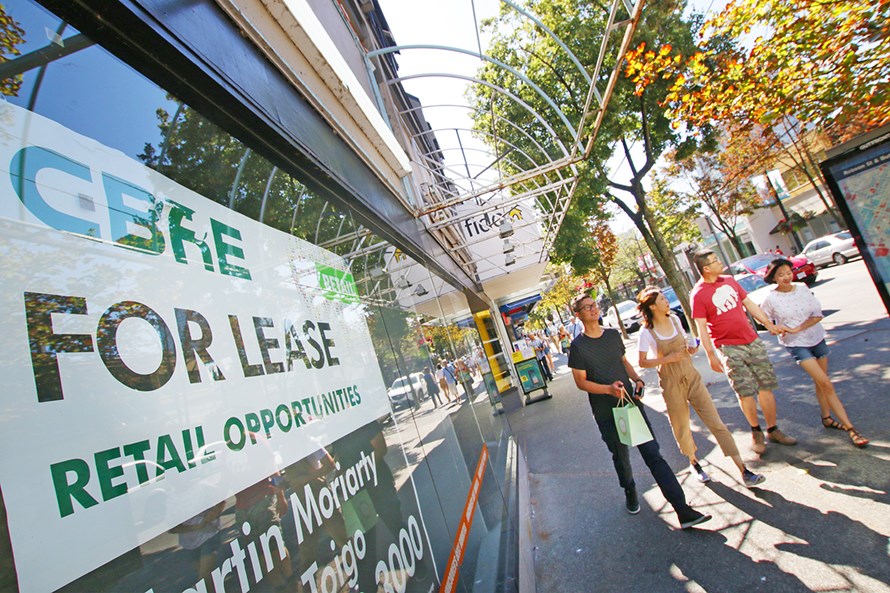“Vancouver Sees Massive Drop in Commercial Tax Rate in 2019” was the dramatic subject line of the email from the Toronto communications firm charged with putting out the word about the 2019 Canadian Property Tax Rate Benchmark Report that real estate consulting firm Altus Group Ltd. produced in partnership with the Real Property Association of Canada.
It was sure to grab attention, especially given the angst regarding retail vacancies in the South Granville shopping district and elsewhere as a result of property taxes (among other factors).
The report specifically calls out a 14 per cent drop in the commercial property tax rate in Vancouver, which it tips as the 14th consecutive year a decrease in rates has occurred. This has also resulted in the rate for commercial properties dropping from 4.4 times the residential rate last year to just 3.6 times the residential rate in this year’s survey – “the largest drop … of the cities surveyed.”
It all sounds nice but the “massive drop” could also be framed as a “massive” increase in commercial property values because the drop is primarily a function of the rising value of commercial properties. Consequently, a lower rate is needed to achieve their share of the tax burden (residential properties currently bear about 55 per cent of the tax burden while businesses pay 45 per cent).
“This shift in the ratio is almost entirely about value change as the modest shift this year had little impact on share of taxes paid by business,” remarked Paul Sullivan, a principal with Vancouver appraisal firm Burgess Cawley Sullivan and Associates Ltd.
This means neighbourhood businesses will continue to face a significant burden from property taxes – effectively sucking the life out of them, as a recent column from Josef Filipowicz and Steven Globerman of theFraser Institute puts it.
A recent Fraser Institute report on the issue that the pair authored recommends allocating the property tax burden on property classes according to their use of municipal services.
“To the extent that property tax rates differ across property classes, the differences should reflect commensurate differences in the relative costs that those asset classes impose on municipalities,” the report says.
The model has been advocated in Vancouver since the early 1990s, but a city staff report earlier this year notes that council did not support the practice when asked in 1995 or 2007.
“One of the key reasons is that consumption models in general focus on properties that receive immediate and direct benefits,” City of Vancouver staff said, while noting that the value of secondary and other benefits to properties is harder to track.
Farmed out
Around 100 small-scale farmers and their supporters (including about a half-dozen B.C. Liberal Party MLAs) rallied at the legislature last week to demand the repeal of Bill 52. A petition to that effect has garnered 27,000 signatures over the past few weeks as opposition to the restrictions being placed on landowners under the province’s farming-first approach to assessing activities within the 11.5-million-acre Agricultural Land Reserve (ALR).
Comox landowner Meghan McPherson, who has led the opposition on social media after facing challenges receiving approval for a residence for family members, said the new policies have had consequences that don’t seem to have been foreseen.
While the province says landowners are free to seek permission for as many secondary dwellings as needed to support farming activities, McPherson expressed concern that the new policies effectively prevent some existing buildings from being rebuilt.
“This makes it more difficult for people to obtain mortgages,” she said. “Lenders consider ALR parcels high-risk to begin with, and now they’re filled with a bunch of structures that are not replaceable should something happen to them.”
This also creates challenges obtaining insurance, McPherson said, a concern farmers have voiced at meetings the province is hosting on the changes and how it can support farming. The consultation completes November 15.



